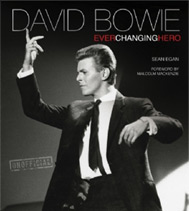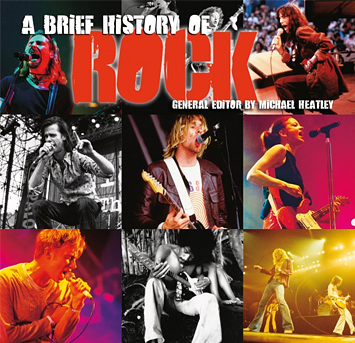Adolphe Sax’s most famous invention, the saxophone, was patented in 1846. This new family of instruments is a cross between the single-reed woodwind family and the keyed brass instruments of the early nineteenth century such as the ophicleides, which are said to have influenced him. Each member of the family combines the single reed and mouthpiece, familiar ...
The saxophone occupies an unusual position in that it is a bespoke instrument that has barely changed since its creation. Although it does not occupy the position in the orchestra its creator had envisaged, Adolphe Sax’s invention has played a central part in music ever since it burst on to the scene in the 1840s. Sax’s father, Charles, ...
American marching band. It was also a regular part of Dixieland bands, adding some beef to the bass part in the rhythm section. It is rarely seen in Europe. Saxophone Musicologists say, with justification, that the saxophone is a wind instrument because it combines a clarinet mouthpiece and an oboe-like body. But the instrument has always been a ...
the same type, and an unequal consort was a mix of instruments of different types, such as wind and stringed instruments. To take a present-day example, a saxophone quartet would have been an equal consort, whereas a rock group would have been an unequal consort. The upshot of this was that when a new instrument was invented ...
be able to hold their own in terms of volume. It is no accident that the more successful solo jazz instruments have proved to be more strident ones like the saxophone and trumpet rather than the oboe or recorder. An ensemble also needs a supply of quality music that exploits its particular strengths and that ‘sells’ that particular combination of instruments ...
exception. Adolphe Sax A man with business acumen and a fascination with design, Adolphe Sax was quick to seize on these developments. Having found major success with his patented saxophone family in the early 1840s, Sax had moved from Brussels to Paris, where he rapidly established himself as an instrument maker to be reckoned with. His next move ...
, the B flat bass is the euphonium and the E flat contrabass was replaced by the E-flat bass tuba. Styles & Forms | Late Romantic | Classical Instruments | Saxophone | Late Romantic | Classical ...
suitable material, these days including plastic, tied over an aperture in a reed-bearing mouthpiece. The most widespread of this type of single-reed instrument are the familiar clarinet and saxophone families, which were developed in Western European classical music, but have their origins in less-engineered instruments. Simple, unkeyed clarinets include the rough-hewn Finnish mänkeri. Made of wood ...
other materials. The conservative reader, disregarding the long history of such experiments, might question their sense and thus the value of the music containing them, but the saxophone in the age of Richard Strauss and the oboe in the age of J. S. Bach were novelties with an uncertain future. The fact is that a creative age is ...
and were played in different repertories. The violin was from the outset associated with dance music and was part of the entertainment end of music, a bit like the saxophone or the electric guitar today. The viol was in a higher social class altogether and the music written for it was intended to be played for (or even by) the ...
Until the 1970s, most synthesizers were played by means of a traditional, piano-style keyboard. This tended to limit the player’s ability to expressively control the sound in real time and manufacturers sought to include additional means of control, such as modulation wheels and touch-sensitive ribbon controllers. Wind and brass players, however, realized that their experience of ...
contrabass, but it is the B-flat soprano that is most commonly used by jazz musicians. The clarinet was the dominant woodwind in jazz until it was supplanted by the saxophone in the 1930s; however the instrument remained in the forefront because of its use by high-profile players such as Benny Goodman, Artie Shaw and Buddy DeFranco. Jimmy Giuffre and ...
birth of a wide range of new musical styles. In Los Angeles, bandleaders Louis Jordan and Tiny Bradshaw pioneered jump blues, an energetic style based around singers and saxophone players. They still used the traditional call-and-response blues approach, but this time it was the singers (‘shouters’) and saxophonists (‘honkers’) who were exchanging phrases and passages. By the end ...
from early 1960s Blue Note and Prestige soul-jazz recordings have been digitally sampled and looped to create the foundation for rhythm tracks on modern-day, cutting-edge recordings. The smooth jazz saxophone star Kenny G went one step further by brazenly ‘dueting’ with Louis Armstrong (via sampling) on ‘What A Wonderful World’, from his 1999 CD, Classics In The Key Of ...
instruments – using enclosed columns of air, based on the principles of fundamentals and overtones. The woodwind section now includes a regular visitor that is made of brass. The saxophone, however, uses a reed to generate sound and is in all respects except the material of its construction, a woodwind instrument. Body Shape The prime concern in ...
AUTHORITATIVE
An extensive music information resource, bringing together the talents and expertise of a wide range of editors and musicologists, including Stanley Sadie, Charles Wilson, Paul Du Noyer, Tony Byworth, Bob Allen, Howard Mandel, Cliff Douse, William Schafer, John Wilson...
CURATED
Classical, Rock, Blues, Jazz, Country and more. Flame Tree has been making encyclopaedias and guides about music for over 20 years. Now Flame Tree Pro brings together a huge canon of carefully curated information on genres, styles, artists and instruments. It's a perfect tool for study, and entertaining too, a great companion to our music books.

David Bowie
Fantastic new, unofficial biography covers
his life, music, art and movies, with a
sweep of incredible photographs.


